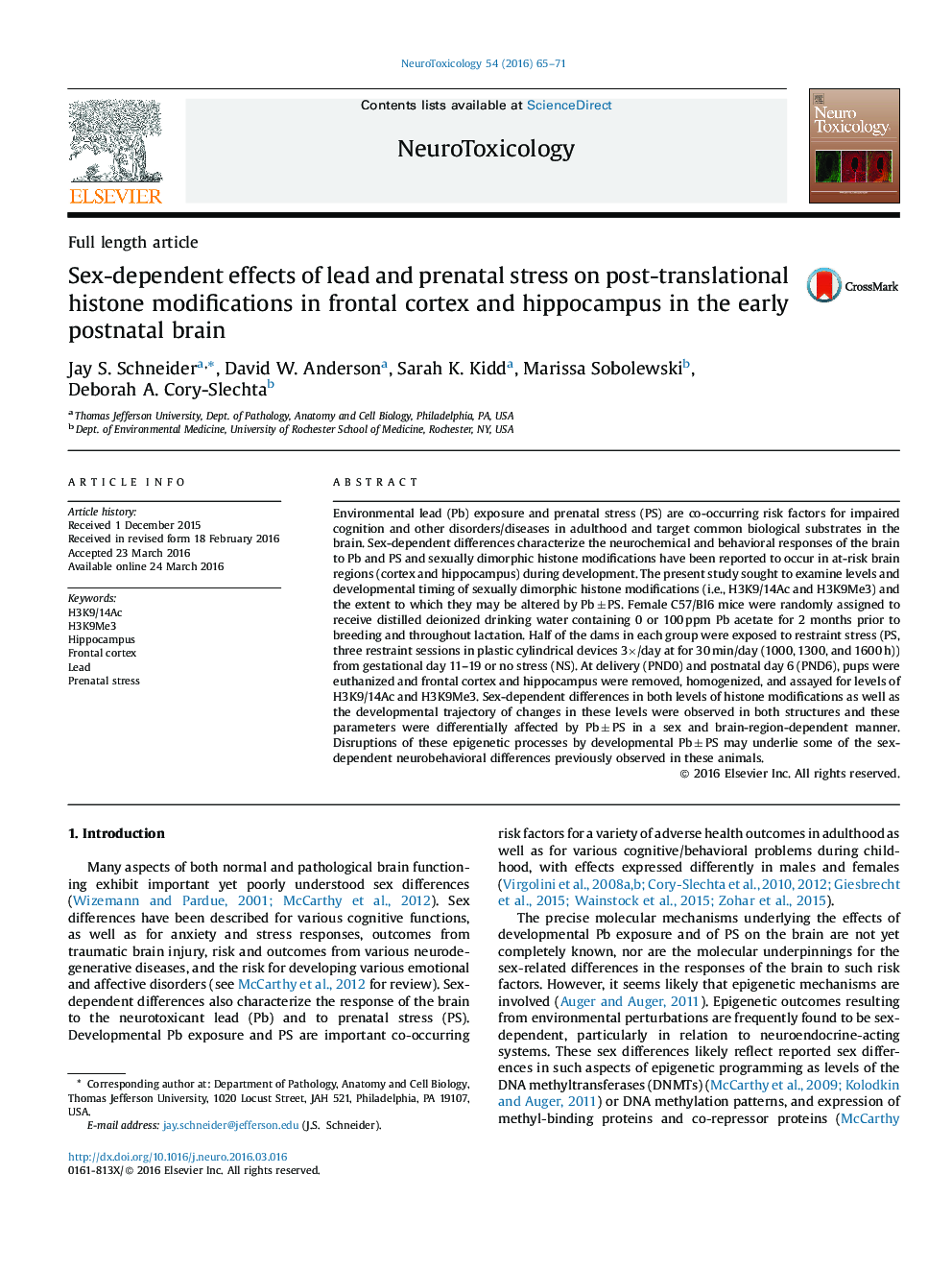| Article ID | Journal | Published Year | Pages | File Type |
|---|---|---|---|---|
| 5854722 | NeuroToxicology | 2016 | 7 Pages |
â¢H3K9/14Ac and H3K9Me3 are suggested to be sexually dimorphic histone modifications.â¢H3K9/14Ac and H3K9Me3 were examined for modification by lead and prenatal stress.â¢Sex-dependent differences were seen in both histone modifications.â¢Effects of lead and stress were sex and brain-region-dependent.
Environmental lead (Pb) exposure and prenatal stress (PS) are co-occurring risk factors for impaired cognition and other disorders/diseases in adulthood and target common biological substrates in the brain. Sex-dependent differences characterize the neurochemical and behavioral responses of the brain to Pb and PS and sexually dimorphic histone modifications have been reported to occur in at-risk brain regions (cortex and hippocampus) during development. The present study sought to examine levels and developmental timing of sexually dimorphic histone modifications (i.e., H3K9/14Ac and H3K9Me3) and the extent to which they may be altered by Pb ± PS. Female C57/Bl6 mice were randomly assigned to receive distilled deionized drinking water containing 0 or 100 ppm Pb acetate for 2 months prior to breeding and throughout lactation. Half of the dams in each group were exposed to restraint stress (PS, three restraint sessions in plastic cylindrical devices 3Ã/day at for 30 min/day (1000, 1300, and 1600 h)) from gestational day 11-19 or no stress (NS). At delivery (PND0) and postnatal day 6 (PND6), pups were euthanized and frontal cortex and hippocampus were removed, homogenized, and assayed for levels of H3K9/14Ac and H3K9Me3. Sex-dependent differences in both levels of histone modifications as well as the developmental trajectory of changes in these levels were observed in both structures and these parameters were differentially affected by Pb ± PS in a sex and brain-region-dependent manner. Disruptions of these epigenetic processes by developmental Pb ± PS may underlie some of the sex-dependent neurobehavioral differences previously observed in these animals.
